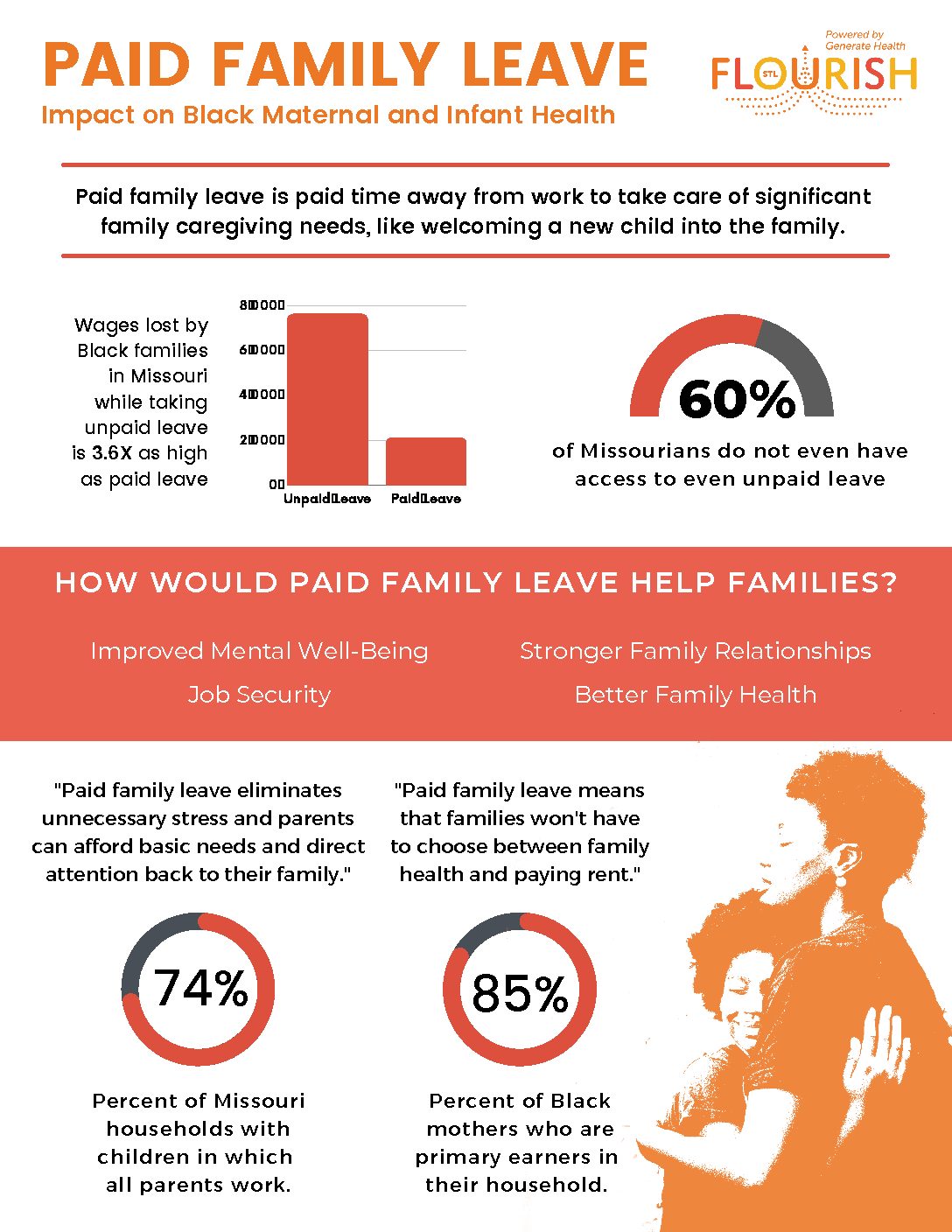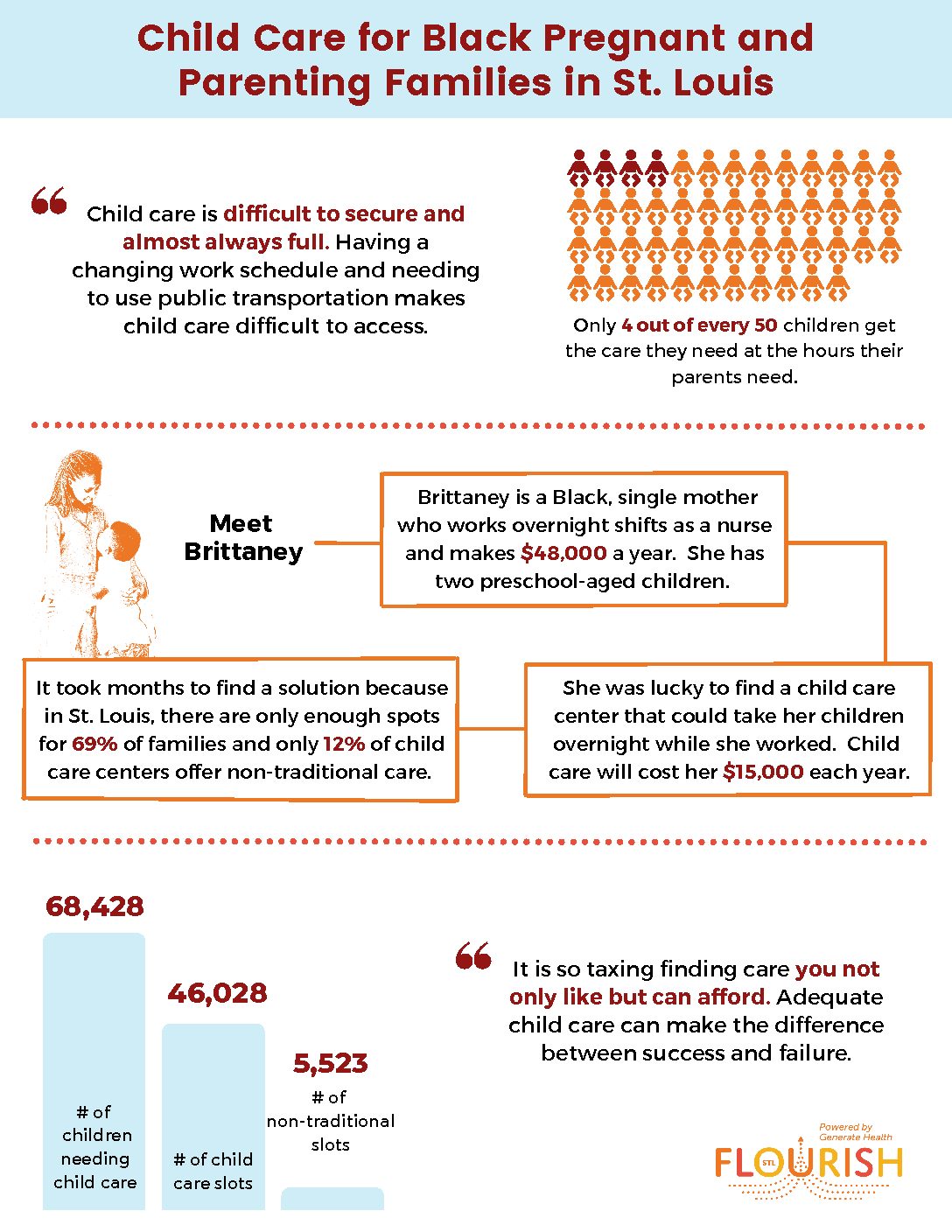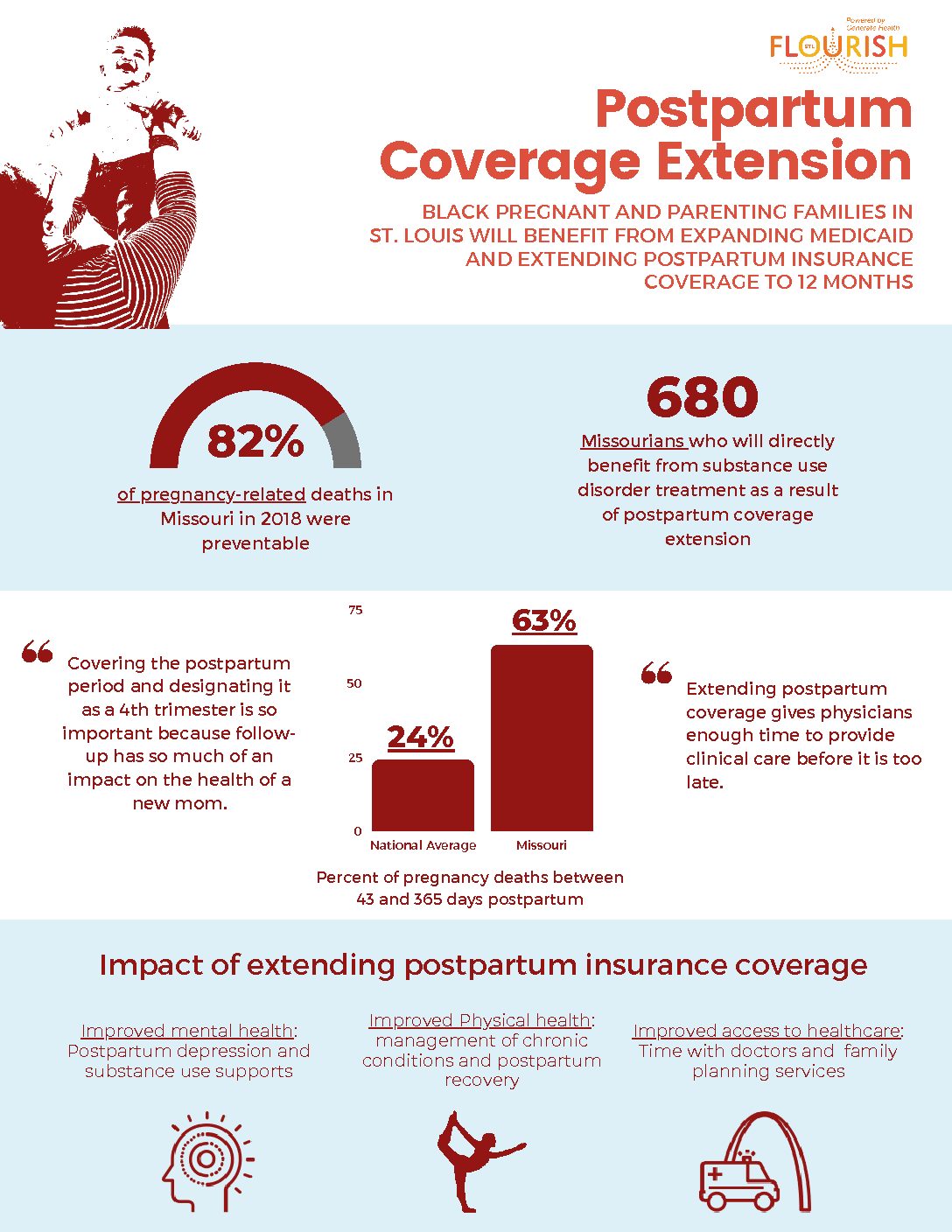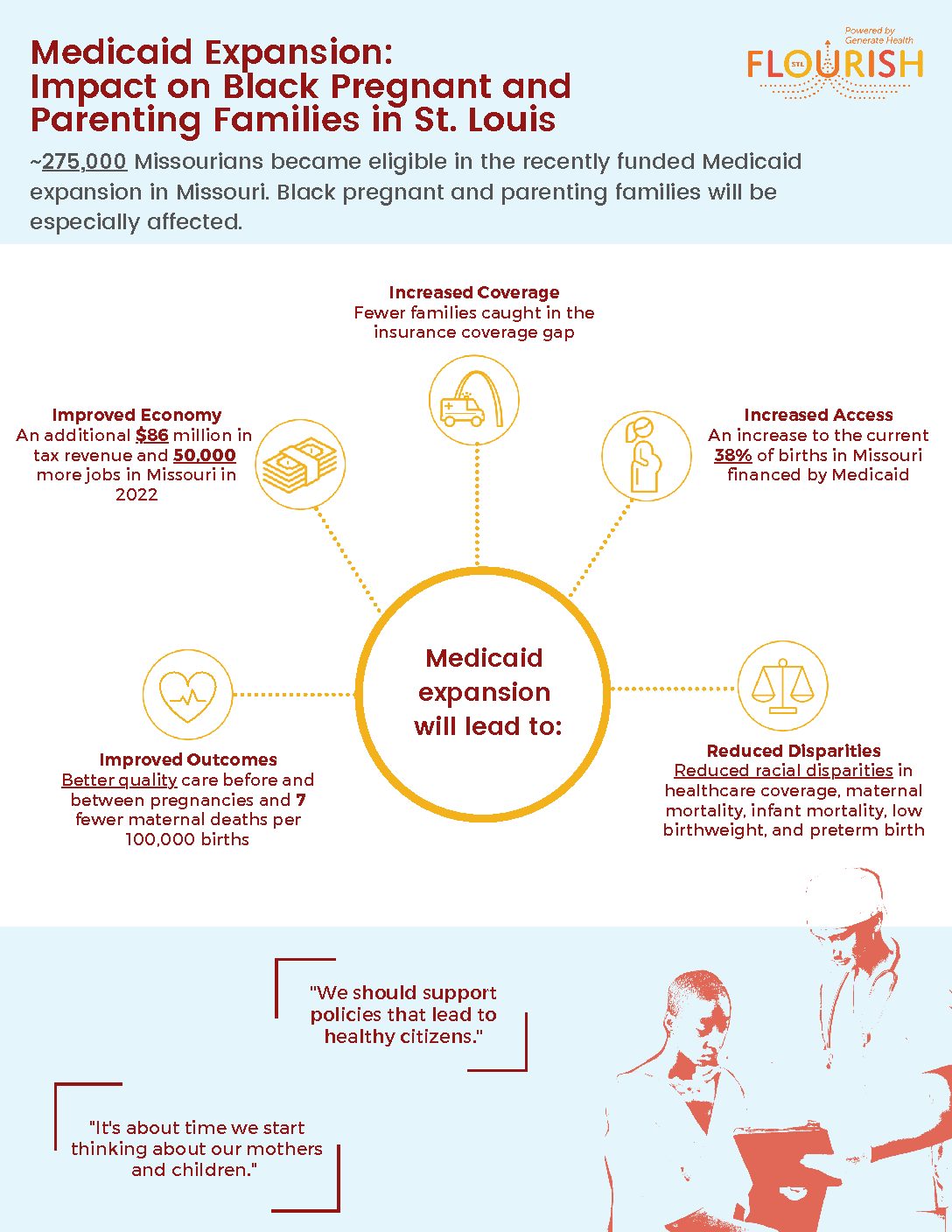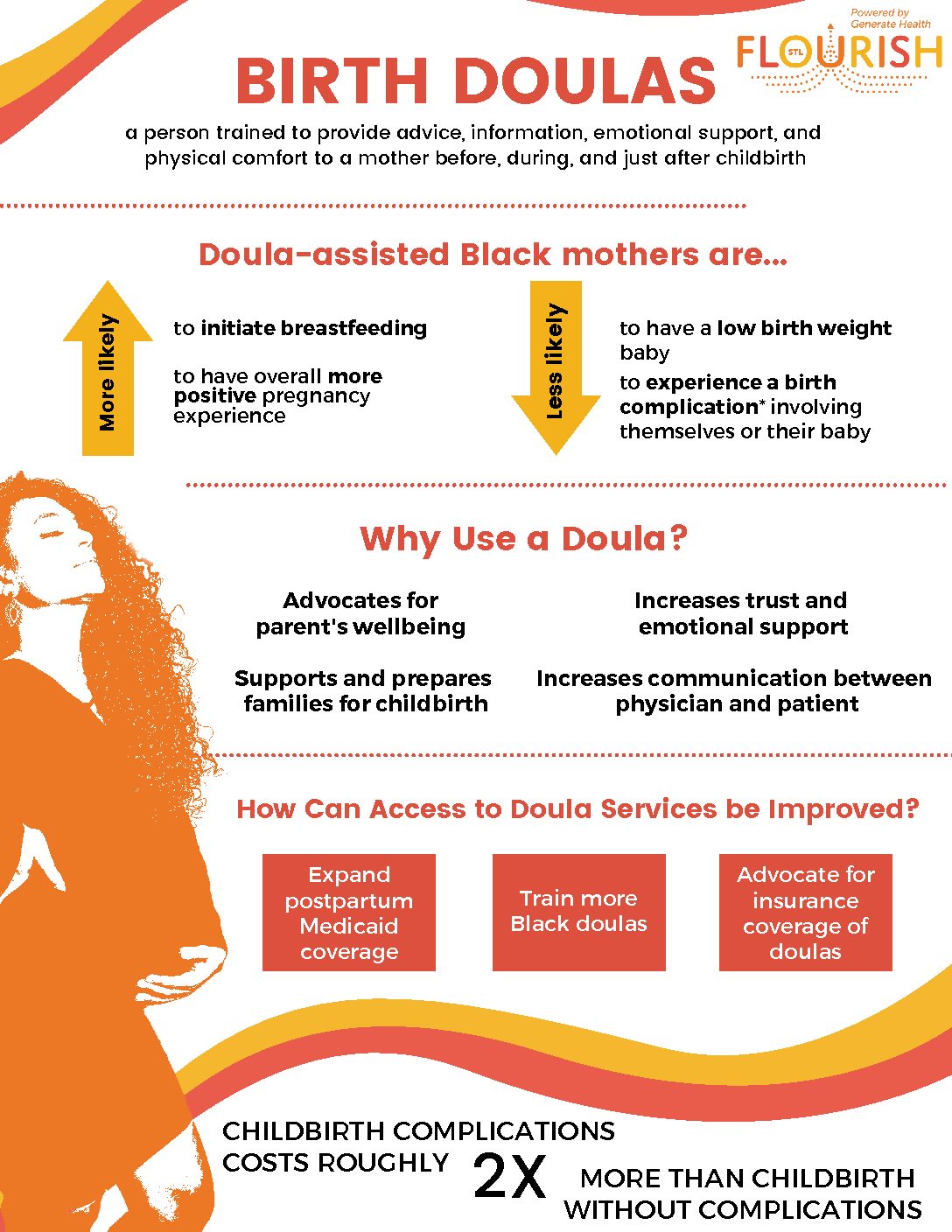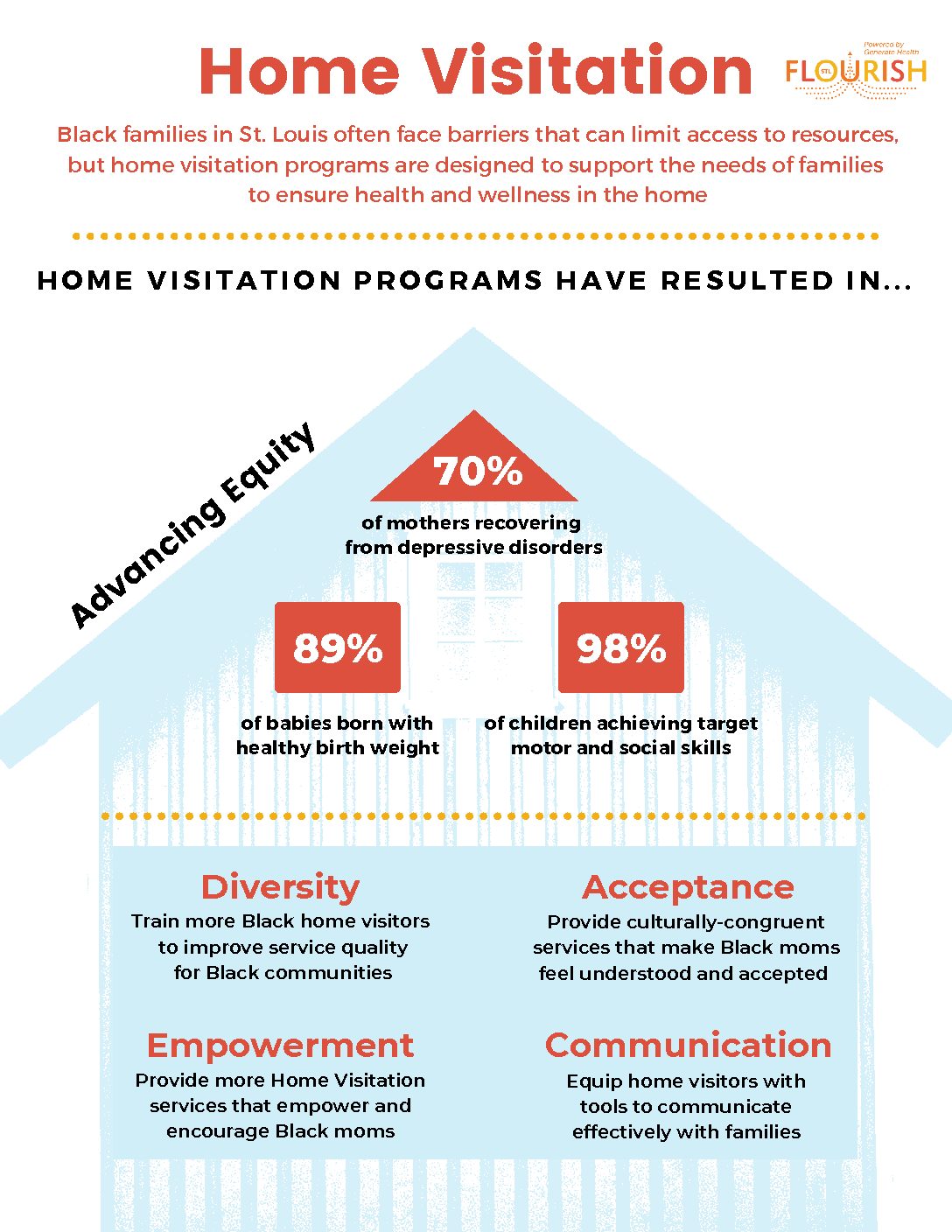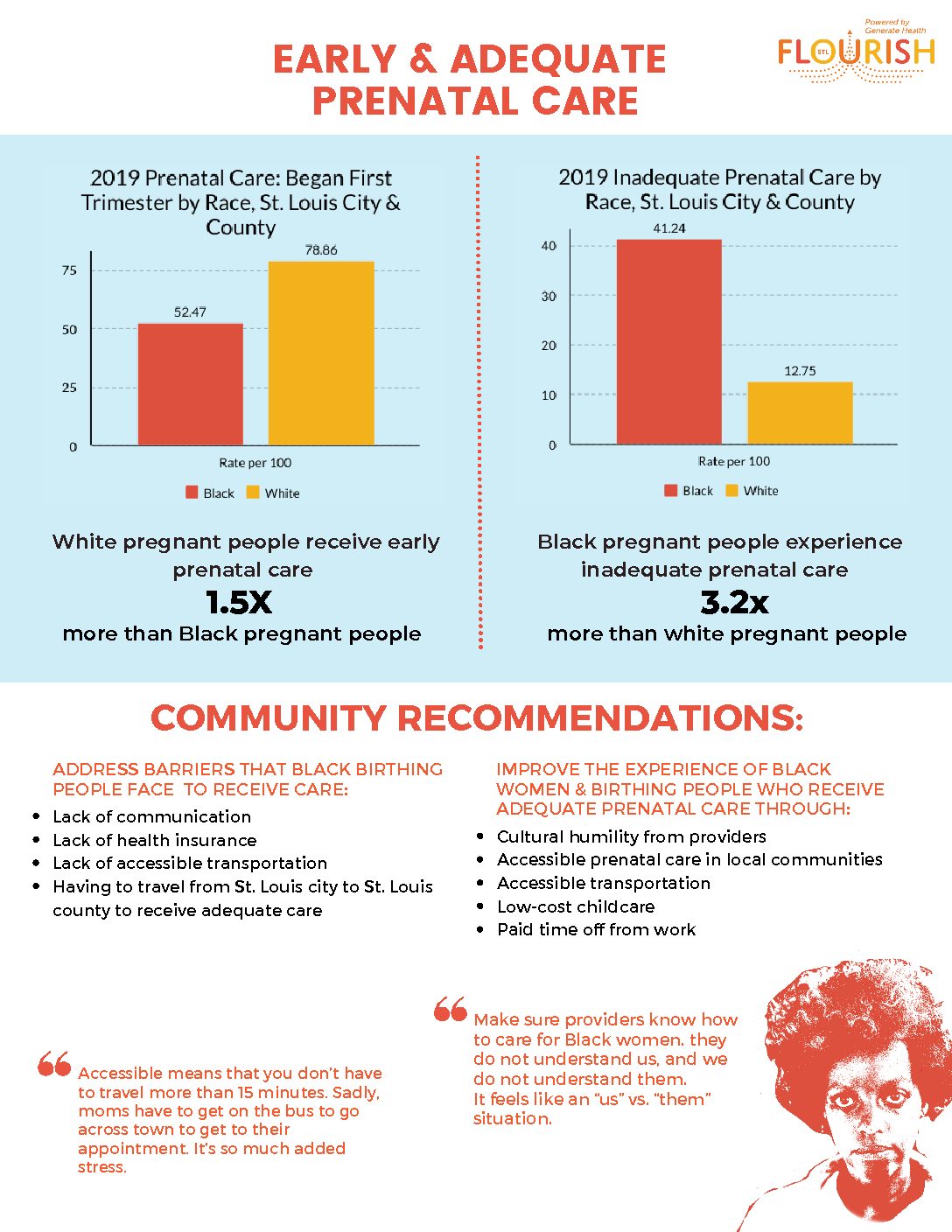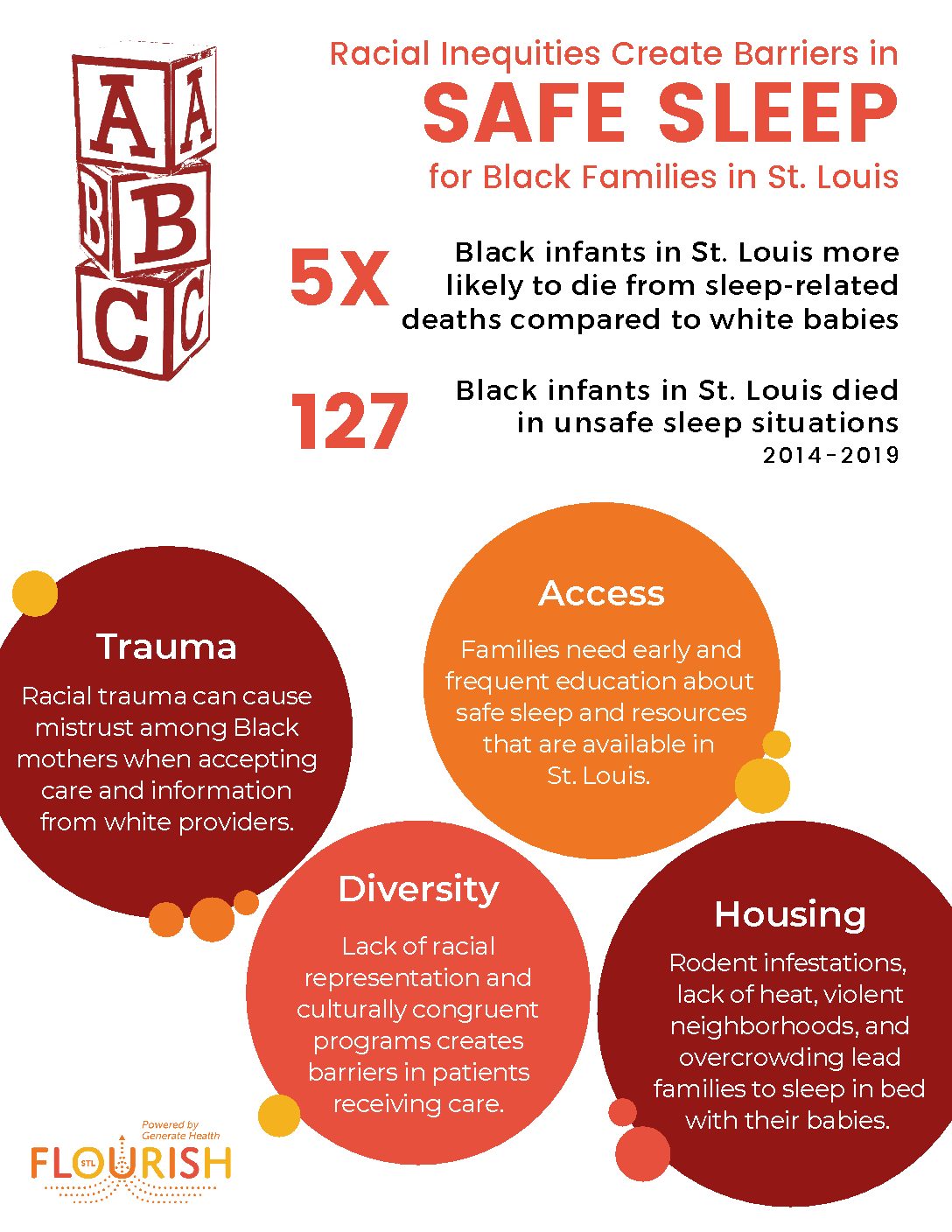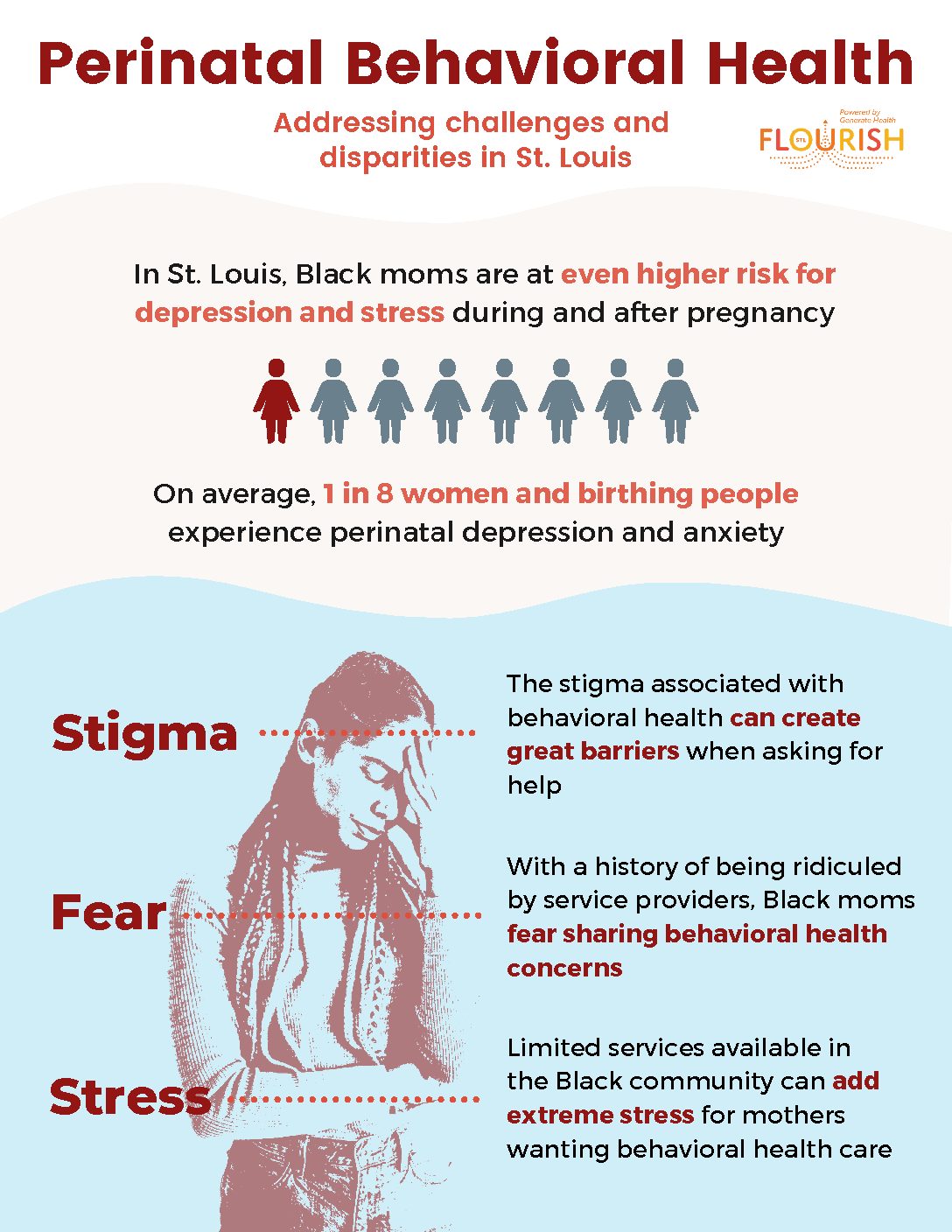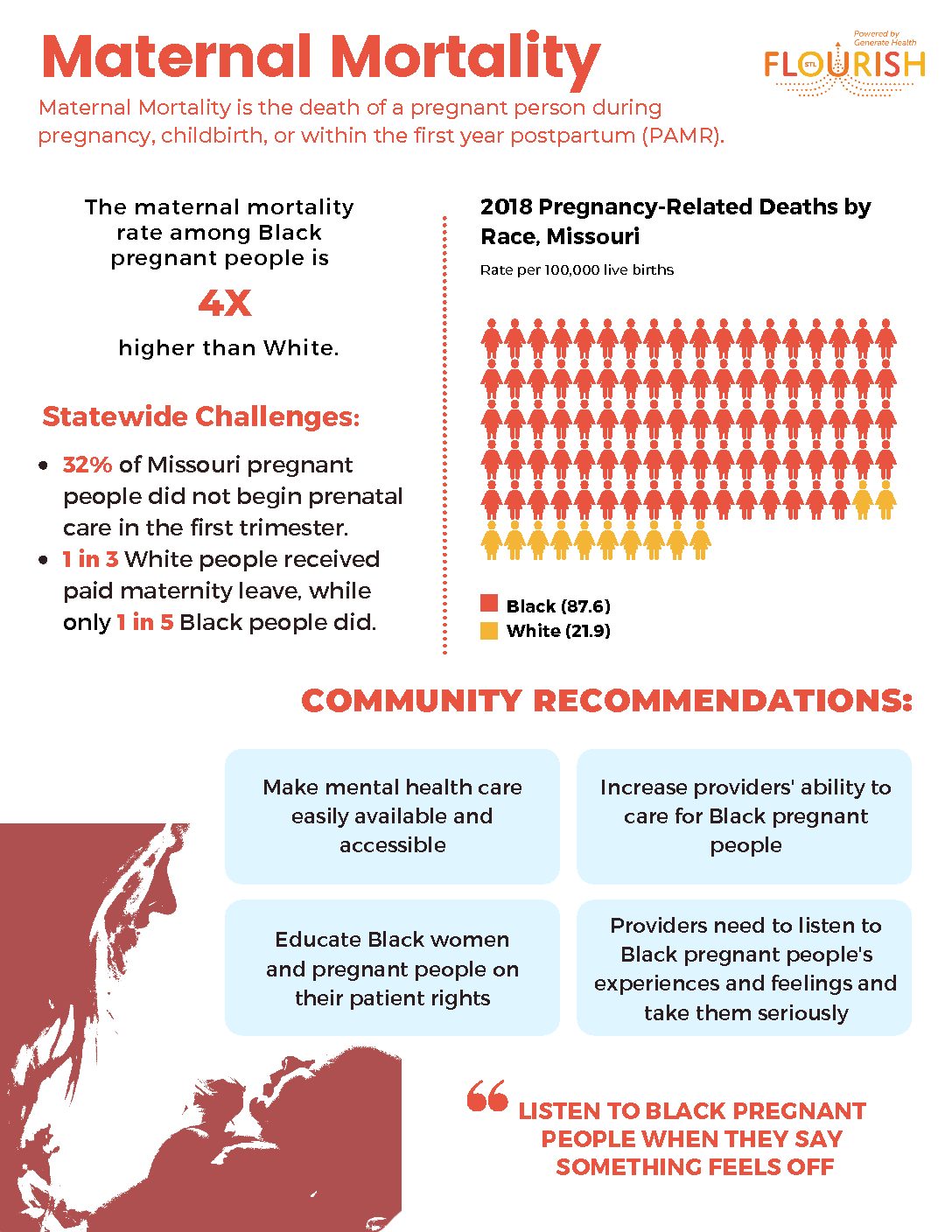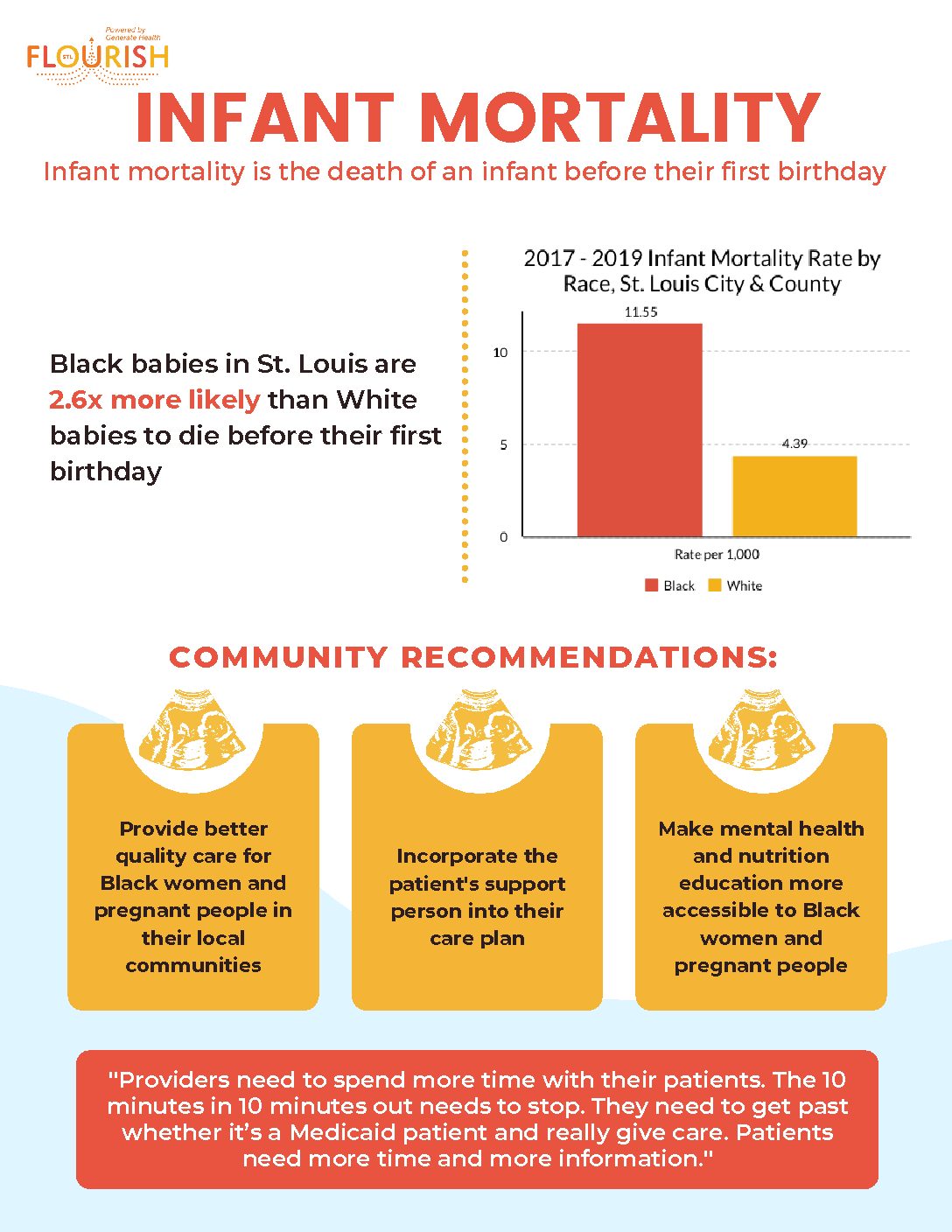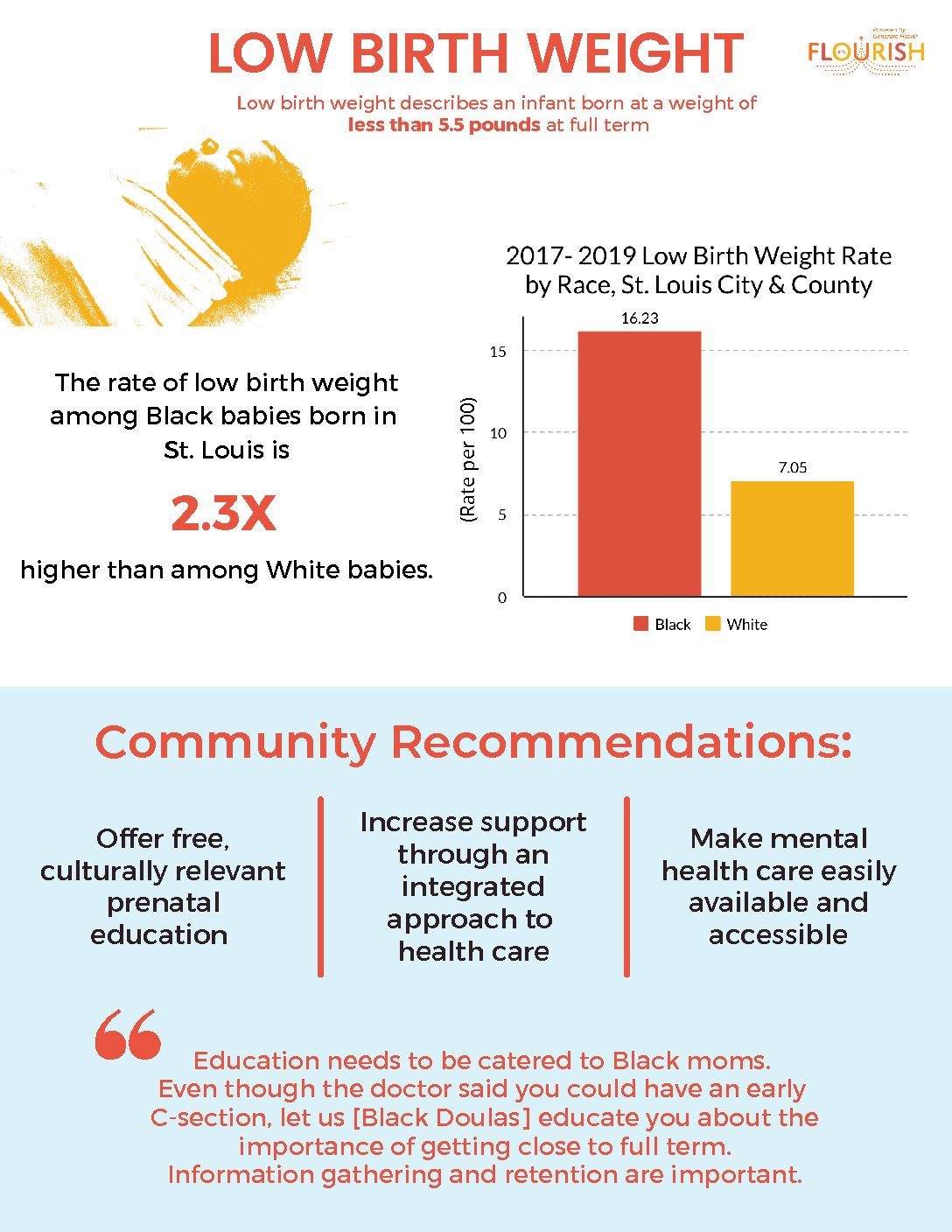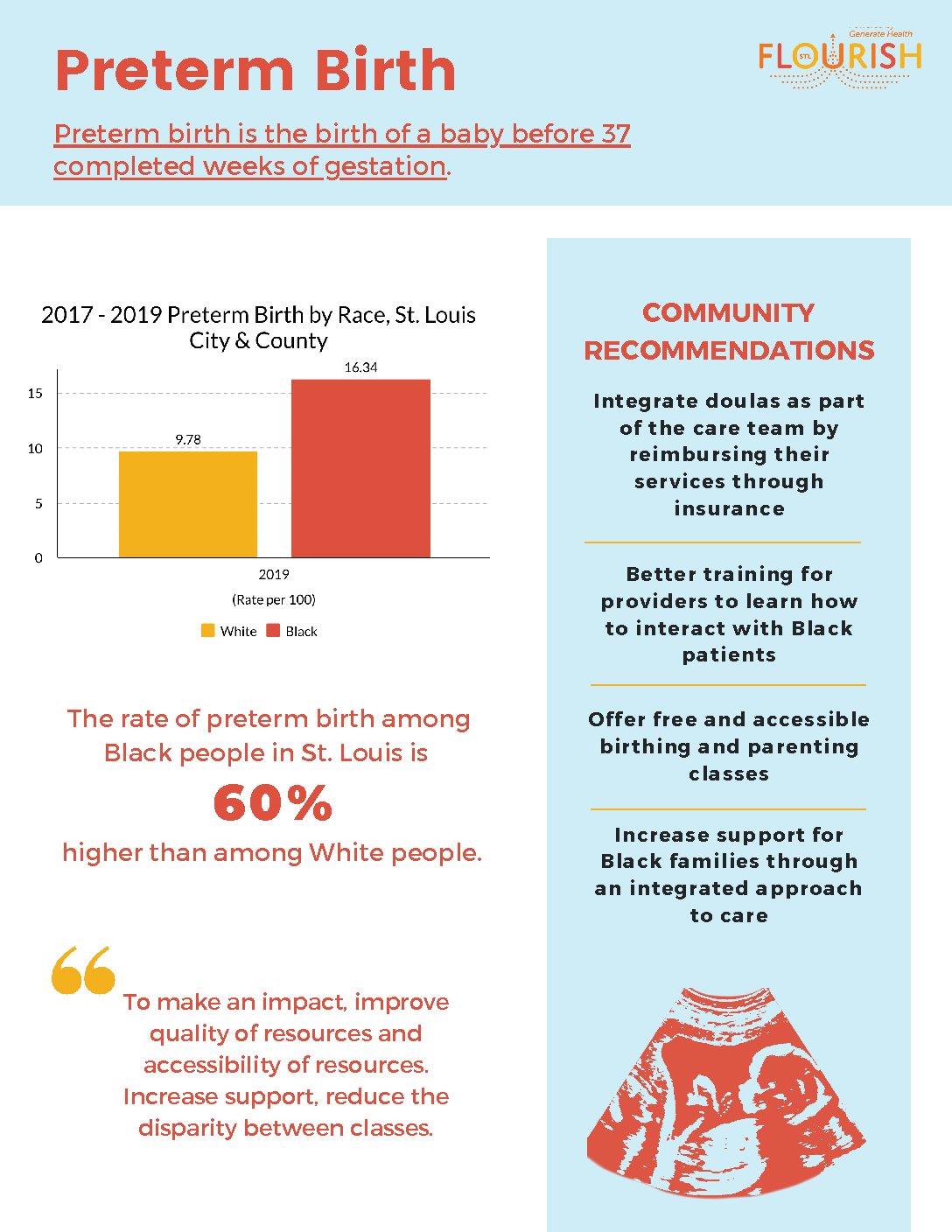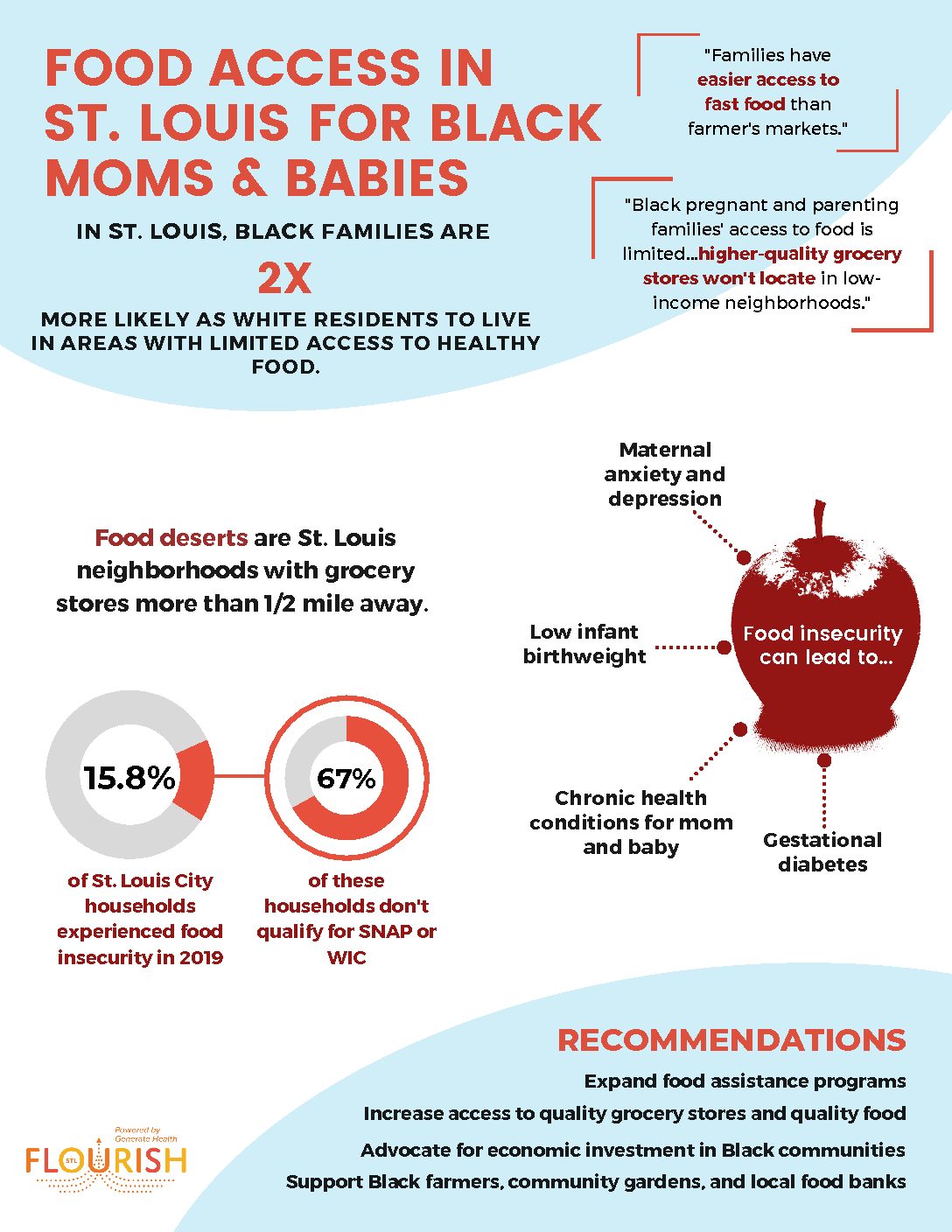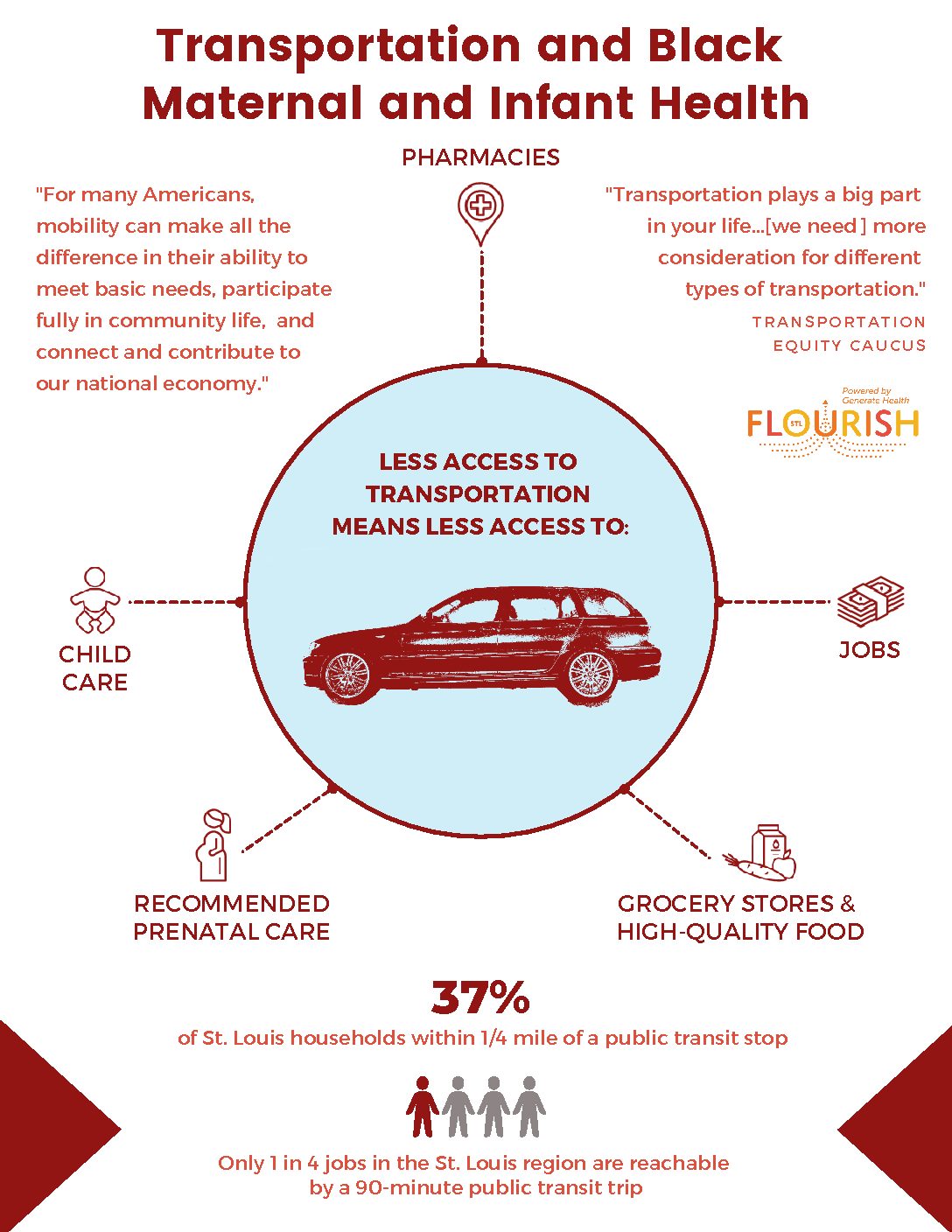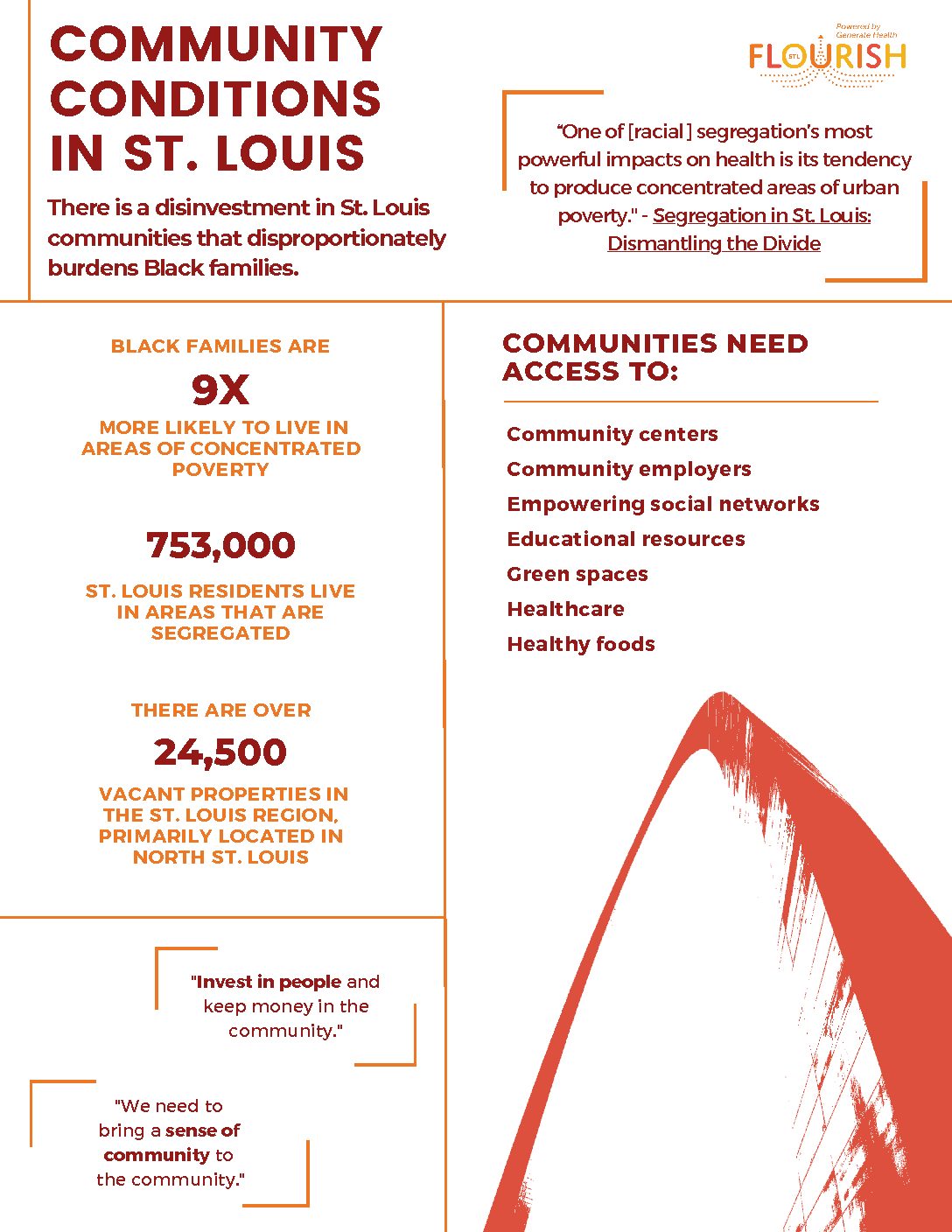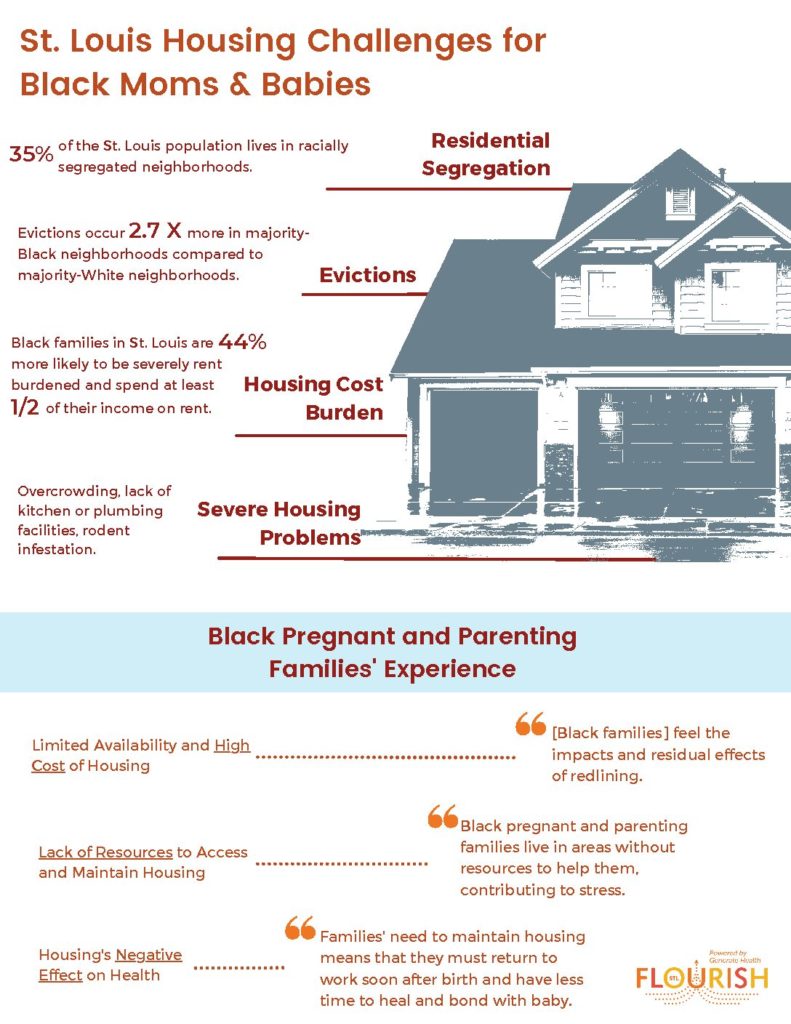Clinical Care in St. Louis
Although St. Louis is known worldwide for medical advances, the patient experience at hospitals is less than ideal for Black pregnant and parenting families. Hospitals emphasize the importance of clinical care, but evidence shows that clinical care accounts for only 20% of a person’s health. The other 80% results from factors outside of the hospital walls such as housing, employment, neighborhood conditions and transportation. These are factors that are too often ignored by health systems.
One factor that explains the racial disparities in clinical care is a phenomenon known as “weathering”. Black individuals experience chronic stress from daily living in a world shaped by systematic racism. This ongoing maternal stress can be passed on to their fetus and can affect whether a baby is born too soon and/or too small. Pregnancy should be a time where individuals are taken care of and supported by a diverse care team. Black women and pregnant people should have access to quality resources that help them thrive. Access to culturally congruent resources and support teams can also help reduce stress during pregnancy. These supports and others can help babies make it to the right size and their due date.
Additional Resources
The tools below show various clinical care indicators. These indicators are often cited as the leading causes of infant deaths. These indicators show the rates in St. Louis compared to rates in Missouri and rates in the United States from 2017-2019. Explore the information about racial disparities that exist in each section. Note that RED boxes at the top indicates rates for “Individuals of All Races” and the GOLD boxes in each section represent rates for “Black Individuals”.
Preterm
Birth
Per 100 Live Births
Low
Birth Weight
Per 100 Live Births
Adequate
Prenatal Care
Per 100 Live Births
Preterm Birth | 2017-2019
Preterm birth is defined as babies who are born alive before 37 weeks of pregnancy are completed. The dashboard below shows the rates of Black preterm birth from 2017-2019. (Source: MOPHIMS-Birth MICA, CDC Wonder-Births)
St. Louis City & County
Per 100 Black Births
Disparity Gap
2:1
Black : White
Missouri
Per 100 Black Births
United States
Per 100 Black Births
St. Louis City & County
F
March of Dimes Grade
Healthy People 2030
9.4
Per 100 Live Births
Additional Resources
Click Red Button to View Infographic
Double-Click Red Button to Download Infographic
Babies born too early, before 37 weeks, are more likely to die or have long term health and social needs. Being born too early can cause later health and development issues for babies over the course of their life. Premature babies are more likely to experience problems that affect their brain, lungs, hearing or vision. Additionally, the medical costs of caring for a preterm infant are extremely high. Each year, premature birth costs Missouri taxpayers $180 million in immediate and short-term costs.
Low Birth Weight | 2017-2019
Low birthweight is defined as a baby that is born weighing less than 5 pounds, 8 ounces. The dashboard below shows the rates of Black babies who are born at a low birth weight from 2017-2019. (Source: MOPHIMS- Birth MICA, CDC Wonder- Births)
St. Louis City & County
Per 100 Black Births
Disparity Gap
3:1
Black : White
Missouri
Per 100 Black Births
United States
Per 100 Black Births
Additional Resources
Click Red Button to View Infographic
Double-Click Red Button to Download Infographic
Babies who weigh less than 5 pounds 8 ounces at birth are more likely than babies whose weight is normal to have health problems. The two main reasons for low birth weight are preterm birth (born too early) and fetal growth restrictions (baby doesn’t gain the weight they should before birth). Some need special care in a hospital’s newborn intensive care unit (NICU) to treat medical problems. A baby who is very small at birth may have trouble eating, gaining weight and fighting off infections. Some may have long-term health problems, too.
Adequate Prenatal Care| 2017-2019
Adequate prenatal care is defined as starting prenatal care within the first two months of pregnancy and attending at least 80% of all scheduled prenatal care appointments. The dashboard below shows the rate of Black women and birthing people who have gotten adequate prenatal care from 2017-2019. (Source: MOPHIMS-Birth MICA; CDC Wonder- Births)
St. Louis City & County
Per 100 Black Births
Disparity Gap
1.3:1
Black : White
Missouri
Per 100 Black Births
United States
Per 100 Black Births
Healthy People 2030
Per 100 Live Births
Click Red Button to View Infographic
Double-Click Red Button to Download Infographic
Beginning care in the first trimester and following a schedule of regular care for the duration of pregnancy can improve outcomes for both mom and baby. Prenatal care can help prevent complications and inform women about important steps they can take to protect their infant and ensure a healthy pregnancy. Barriers to accessing adequate care can include lack of health insurance, transportation, geographic distance to care and a host of other community conditions. Increasing providers’ cultural congruency and communication skills can also improve a pregnant person’s ability to access prenatal care that meets their individual needs.

